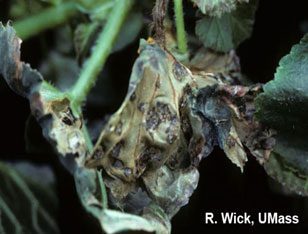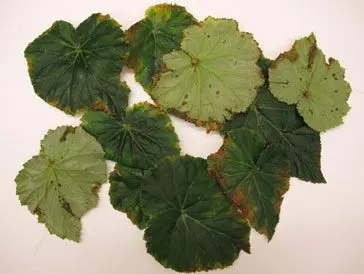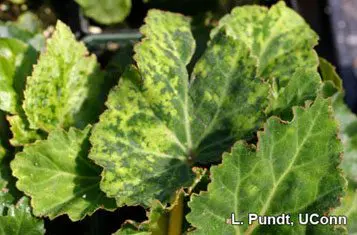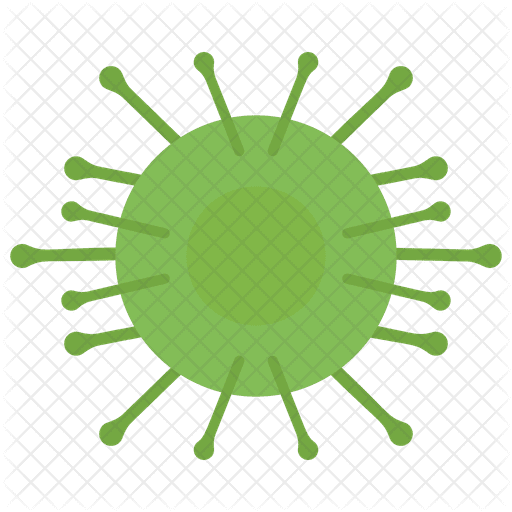Two of the most frustrating problems to have in a collection of begonias are bacterial and virus infections. The actual disease cause is so small that you can’t see it, all you can see are your plants suffering. What makes these problems so frustrating is that the symptoms are hard to diagnose, there are no guaranteed ways to avoid the problems, and most times the smartest thing to do is to remove and destroy any infected plants.
What these two diseases have in common:
- They are internal, the infections spread under the surface of the leaves of your plants, making it harder to spray to control them.
- They can persist without symptoms for years and when suddenly the perfect storm arrives, they can destroy not just the infected plant but spread to all the others. In between outbreaks they remain inside the plant, infectious and ready to be transmitted.
- They can survive in every part of your plant, so you can’t cut away the damaged parts and keep the healthy.
- They are both transmitted by insect feeding on your plants and by using contaminated tools, or dirty hands. One of the viruses, TMV or Tobacco Mosaic Virus, is even carried in cigarette smoke, as well on the skin and clothes of smokers.
Good plant hygiene is the best way to keep chances of infection at their lowest.
- Regularly clean your tools (pruners, knives, etc with a bleach solution, or hydrogen peroxide to sterilize your tools between uses.
- Remove all dead or dying leaves, flowers, and stems and bag them up for the trash.
- Remove all weeds from around your begonias, as they can carry viruses and disease.
- Keep good air circulation around your plants.
- Always quarantine a new Begonia for at least a month or so, in case it has something. This will keep it from immediately infecting the rest of your collection.
- Always immediately remove and destroy any infected plants.

Bacterial Leaf Spot is a foliar disease of Begonias. Sanitation is the most important disease management tactic; practices that minimize water splashing and reduce leaf wetness are recommended | Photo: UMass Center for Agriculture, Food, and the Environment. All rights reserved.
Bacteria
Bacterial infections are often confused with viral infections, the symptoms are often quite similar. Your best defense is good plant hygiene. The most common and therefore the worst bacteria recently is Xanthomonas axonopodis pv. Begoniae. This bacteria swim through water on the leaf until it finds a wound or stomate and then it swims down inside the plant and multiplies.
So one of your first control techniques is to keep the leaves dry, so this little swimmer cannot get around. Here are some links to help you see what symptoms look like and some ideas to help if you find yourself infected.

Bacterial leaf spot on Begonia. Note the leaves are browning from the edges where water drops form along the edge of the leaf. | Photo: NCSU Plant Disease and Insect Clinic – All rights reserved.
Virus
Virus symptoms run from loss of energy in the plant to mottling and die back of the leaves, to a quick wilt and death. Each of the 6-8 viruses that infect Begonia will show some slightly different symptoms. There are always new virus identifications being made because they mutate into new forms, hybridize, and infect new hosts all the time. Just remember it is a constantly changing area of science because it is only in the last few years that identification techniques have really started to improve. The links below are to help you see what symptoms look like so you can begin to know what to look for.

Impatiens Necrotic Spot Virus (INSV) Note the distinctive viral mosaic pattern of yellow and green mottling. | Photo: UMass Center for Agriculture, Food, and the Environment. All rights reserved.
Remember: When they say the best way to stop having problems is to destroy all infected plants – this is a case where you can’t save the plant with loving care, but you can make sure all your other plants get infected too. Be merciless and get rid of the infected plants. Don’t propagate them, don’t wait.




